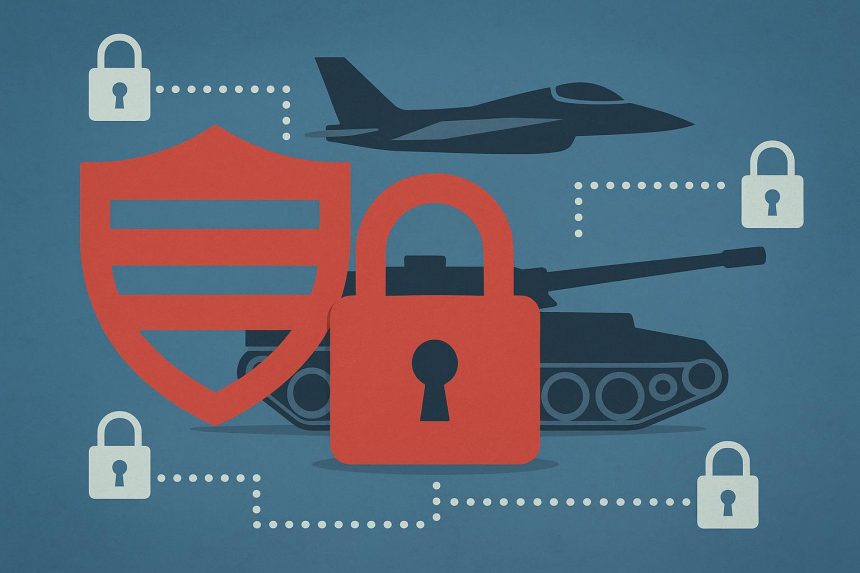Defense contractors used to operate in a much simpler world when it came to cybersecurity. A few basic protections, maybe a firewall and some password policies, and most companies could land government contracts without too much hassle. Those days are gone, and they’re not coming back.
The shift didn’t happen overnight, but the changes have been dramatic. What started as relatively straightforward security requirements has evolved into a complex web of certifications, assessments, and continuous monitoring that many contractors struggle to navigate. The question most people ask is why the government keeps raising the bar, and the answer comes down to one uncomfortable reality: adversaries got smarter, and the old protections weren’t working anymore.
The Wake-Up Call Nobody Wanted
The defense industrial base—that’s the network of contractors and subcontractors who support military operations—became a massive target over the past decade. Foreign intelligence services figured out something important: why hack directly into Pentagon systems when you could go after smaller contractors with weaker defenses? These companies had access to sensitive technical data, manufacturing specifications, and operational information that enemies wanted.
The breaches started piling up. Small machine shops that made specialized components for fighter jets got compromised. Engineering firms designing next-generation weapons systems had their networks infiltrated. In many cases, these companies didn’t even know they’d been hacked until federal investigators came knocking. The stolen information wasn’t just embarrassing—it gave adversaries the ability to copy American technology, understand military capabilities, and potentially compromise future operations.
Here’s the thing that made the situation worse: most of these breaches were completely preventable. Attackers weren’t using sophisticated zero-day exploits or advanced techniques. They were getting in through basic vulnerabilities that should have been closed years ago. Unpatched systems, weak passwords, employees clicking on phishing emails—the usual suspects that every cybersecurity professional warns about.
From Guidelines to Requirements
The Department of Defense responded by tightening the rules, starting with DFARS (Defense Federal Acquisition Regulation Supplement) clauses that required contractors to implement specific security controls. This was a step up from previous guidance, but it relied heavily on self-attestation. Companies essentially certified that they met the requirements without independent verification, and not everyone was honest about their security posture.
The problem with self-attestation became obvious pretty quickly. Some contractors genuinely believed they were compliant when they weren’t, misunderstanding technical requirements or implementing controls incorrectly. Others took shortcuts, checking boxes without actually securing their systems. The honor system wasn’t protecting sensitive information, so the government decided to change the approach entirely.
That’s where CMMC (Cybersecurity Maturity Model Certification) enters the picture. Unlike previous frameworks, CMMC requires third-party assessment and certification. Companies can’t just say they’re secure—they have to prove it to trained assessors who verify that controls are properly implemented and functioning. For contractors who need to handle controlled unclassified information, working with professionals who provide cmmc compliance support has become necessary to meet these verification requirements and maintain their ability to bid on defense contracts.
Why the Standards Won’t Stop Evolving
The threat environment keeps changing, which means the standards have to change with it. Adversaries don’t sit still—they develop new techniques, find new vulnerabilities, and adapt to defensive measures. What worked to protect systems five years ago might be inadequate today, and what’s adequate today might not be sufficient tomorrow.
Ransomware attacks have become more sophisticated and targeted. Supply chain compromises now affect multiple organizations simultaneously through a single weak point. Advanced persistent threats from nation-state actors operate quietly in networks for months or years, slowly gathering information without triggering alarms. Each new attack method forces regulators to rethink what “adequate security” actually means.
The interconnected nature of modern defense work compounds these challenges. A prime contractor might work with dozens of subcontractors, each with their own network of suppliers. If any link in that chain has weak security, it creates a pathway for attackers to reach more valuable targets. The Pentagon can’t just focus on securing the big defense companies anymore—the entire ecosystem needs protection.
The Business Impact
Stricter standards create real challenges for contractors, especially smaller companies that don’t have dedicated cybersecurity teams or unlimited budgets. Compliance costs money—sometimes a lot of money. Companies need to upgrade systems, implement new security tools, train employees, document processes, and pay for assessments. For a small business operating on thin margins, these expenses can feel overwhelming.
But the alternative is worse. Companies that can’t meet the security requirements lose their ability to compete for government contracts. As CMMC requirements phase in across different contract types, non-compliant contractors will find themselves shut out of opportunities they’ve relied on for years. The market for defense work is already competitive, and security compliance has become another barrier to entry.
There’s also the reputation issue. A contractor that suffers a breach doesn’t just face potential penalties—they damage relationships with primes and government customers who depend on them to protect sensitive information. In an industry where trust matters enormously, a security incident can destroy years of relationship-building overnight.
What This Means Going Forward
The trajectory is clear: defense industry security standards will keep getting more demanding. The government has made cybersecurity a priority at the highest levels, with regular directives emphasizing the importance of protecting the defense industrial base. As threats evolve, requirements will evolve with them.
Future changes will probably focus on areas that current frameworks don’t address completely. Supply chain security verification, for instance, remains challenging when components come from multiple international sources. Insider threat detection needs improvement across the board. Cloud security requirements will likely become more specific as more contractors move operations to cloud platforms. And as artificial intelligence becomes more prevalent in defense systems, expect new standards around AI security and validation.
The contractors who succeed won’t be the ones fighting these changes or looking for workarounds. They’ll be the ones who view security as a competitive advantage, building robust programs that exceed minimum requirements and positioning themselves as trusted partners for sensitive work. The upfront investment might sting, but it beats losing contracts or dealing with the aftermath of a breach.
The bottom line is this: stricter standards reflect the reality of modern warfare and espionage. The information flowing through contractor networks has genuine value to adversaries, and protecting it requires more than basic security measures. The government isn’t going to lower the bar, so contractors either need to clear it or find different work. That might sound harsh, but when national security is at stake, there’s not much room for compromise.
Lynn Martelli is an editor at Readability. She received her MFA in Creative Writing from Antioch University and has worked as an editor for over 10 years. Lynn has edited a wide variety of books, including fiction, non-fiction, memoirs, and more. In her free time, Lynn enjoys reading, writing, and spending time with her family and friends.















